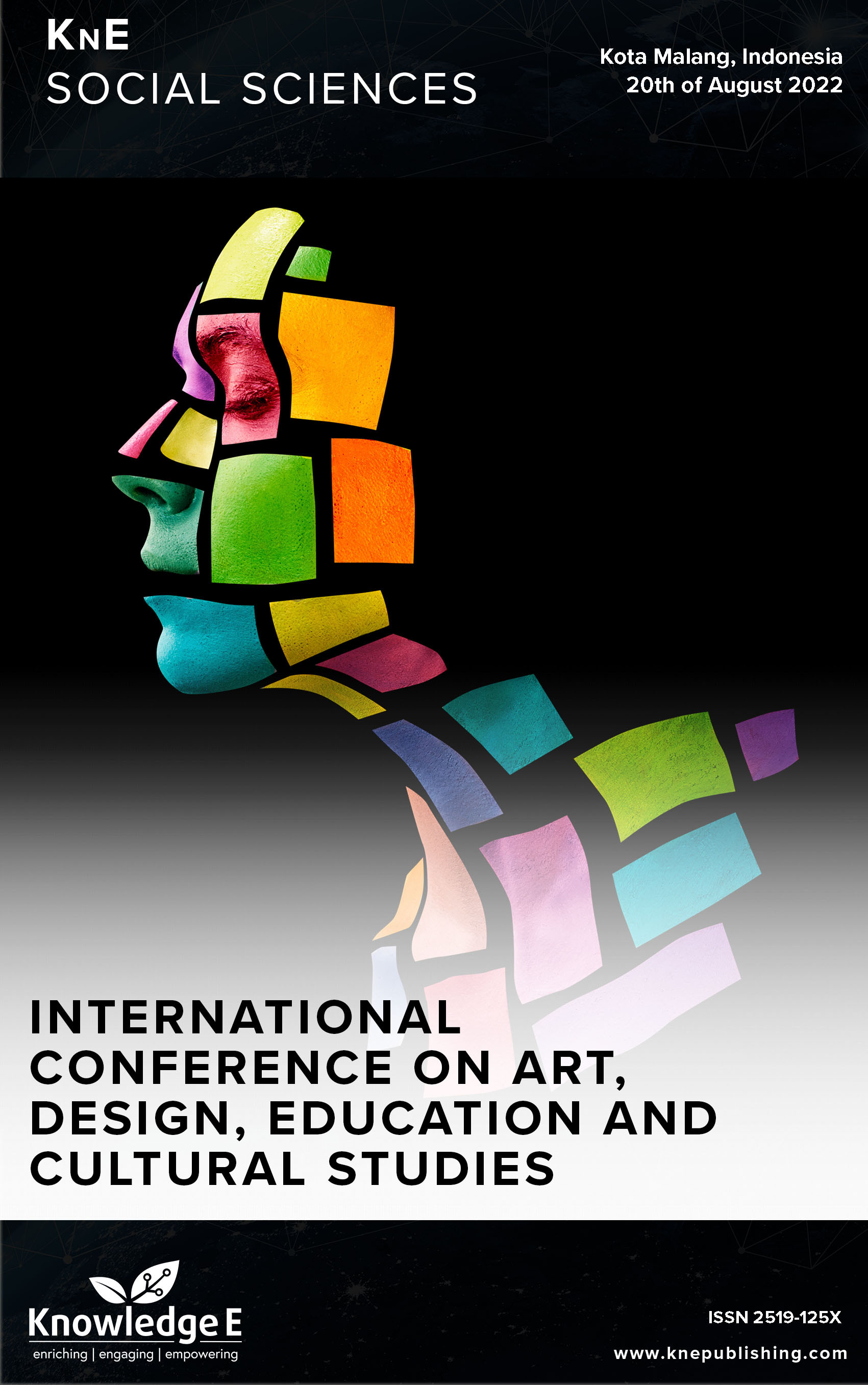The Context of Murals as Youth Media in the Aesthetic Perspective of Marxism
DOI:
https://doi.org/10.18502/kss.v8i15.13941Abstract
Murals are often found as a medium to express what lies in the imagination of their artists. Talks and murals are often discussed, primarily related to social issues, which are often the central theme when young people are the artists. This research explores murals from another point of view, namely from youth-media activism through the aesthetic perspective of Marxism. The aim is to find the contextual relations of social issues with the phenomenon of youth media in the aesthetics of Marxism. The research method is grounded in theory by exploring how the aesthetics of Marxism sees the mural phenomenon, which has played an essential role in the social movement of young people. In this study, it is known that apart from choosing the place, the material to be depicted, and the message to be conveyed, this activist mural artist also illustrates how interrelated the current protests are with the phenomena that emerged during the time of Marx. This shows the existence of a hermeneutic role in framing phenomena that are contextualized to the present.
Keywords: mural, activism, hermeneutic, youth media, Marxist aesthetics
References
[2] Murthy D. Towards a sociological understanding of social media: theorizing Twitter. Sociology. 2012;46(6):1059–73.
[3] Romain J. ‘All art is part of the same constellation’: A conversation on craft and artistic practice with heri dono. J. Mod. Craft. 2016;9(2):183–91.
[4] Hagman G. The artist’s mind. London: Routledge; https://doi.org/10.4324/9780203841129
[5] López Orozco L. The revolution, Vanguard artists and mural painting. Third Text. 2014 May;28(3):256–68.
[6] Mustaqim K. Drawing perform’s: An artistic research. International Journal of Creative Arts and Studies. 2018;5(1):55–66.
[7] Bayu M, Zaini I. Art approach in inclusive class to help student with autism. 2018;222:301- https://doi.org/10.2991/soshec-18.2018.65
[8] Goldie P, Scellekens E. Philosophy and conceptual art. New York: Oxford University Press; 2007.
[9] Cohen MI. Three Eras of Indonesian Arts Diplomacy. Bijdr. Tot Taal- Land- En Volkenkd. 2019;175(2-3):253-283. https://doi.org/10.1163/22134379-17502022
[10] Green B, Feldman-Barrett C. ‘Become what you are’: subcultural identity and ‘insider teaching’ in youth studies. Teach High Education. 2022 Jan;27(1):39–53.
[11] Hobsbawm E, Ranger T. The invention of tradition. Cambridge: Cambridge University Press; https://doi.org/10.1017/CBO9781107295636
[12] Schuyler S. Reality television, melodrama, and the great recession. Stud Pop Cult. 2015;37(2):43–65.
[13] McLeod J. Youth studies, comparative inquiry, and the local/global problematic. Review of Education, Pedagogy and Cultural Studies. 2009 Aug;31(4):270–92.
[14] Wood BE. Youth studies, citizenship and transitions: towards a new research agenda. Journal of Youth Studies. 2017 Oct;20(9):1176–90.
[15] Johnson IC. Doing fieldwork in an acrylic hell: mediations between personhood, art and ethnography in a Thai mural painting. Journal of Visual Art Practice. 2018 Jan;17(1):81–99.
[16] Lee JJ. Excavating the mural of paradise by Lee Jung-Seob. Art Transl. 2020 Oct;12(4):469–88.
[17] Allen R. The anthropology of art and the art of anthropology - a complex relationship. University of Stellenbosch; 2008.
[18] Maruska S. Affective moves: transit, transition and transformation. 2015 Dec.
[19] Van Manen M. On the epistemology of reflective practice. Teach Teach. 1995;1(1):35– 50.
[20] Ahimsa-Putra HS. Epistemologi Antropologi. Yogyakarta: Universitas Gadjah Mada Press; 1995.
[21] Chaney D. Symbolic capital. Lifestyles, https://doi.org/10.4324/9780203137468-5
[22] Ho K. Mural painting as inclusive art learning experience. Teach Artist Journal. 2010 Mar;8(2):67–76.
[23] Li H, Wang W, Zhan H, Qiu F, Guo Q, Sun S, et al. The effects of atmospheric moisture on the mural paintings of the Mogao Grottoes. Studies in Conservation. 2017 May;62(4):229–39.
[24] Rossetto E. A hermeneutic phenomenological study of community mural making and social action art therapy. Art Ther. 2012 Jan;29(1):19–26.
[25] Freeman RB. Damaged mural. Art J. 1971 Dec;31(2):178–80.
[26] Coffey MK. Muralism and the people: culture, popular citizenship, and government in post-revolutionary Mexico. Communication Review. 2002 Jan;5(1):7–38.
[27] Rowe MW, Desrochers MD, Steelman KL. Lead and Zinc pigmented mural paint: discovering ancient technologies at Lowry Pueblo great house in Southwest Colorado. Kiva. 2022 Oct;88(4):408–28.
[28] Jovanovich-Kelley M. The apotheosis of power: corporate mural commissions in Los Angeles during the 1930S. Public Art Dialogue. 2014 Jan;4(1):42–70.
[29] Brandom E. Georges Sorel’s Diremption: Hegel, Marxism and anti-dialectics. Hist Eur Ideas. 2016 Oct;42(7):937–50.
[30] Hall ET. The hidden dimension. Garden City (N.Y.): Doubleday; 1966.
[31] Mészáros I. Marx’s Theory of Alienation. Fifth edit. New Jersey: Merlin Press. 2006.
[32] Levin M. From Marxism to communism: A review article. Europe-Asia Studies. 1997 Dec;49(8):1519–25.
[33] Cavooris R. Intellectuals and political strategy: hegemony, posthegemony, and post- Marxist theory in Latin America. Contemporary Politics. 2017 Apr;23(2):231–49.
[34] Baudrillard J, Johnston J. The ecstasy of communication. Stardom and celebrity: A reader. https://doi.org/10.4135/9781446269534.n7
[35] Vihalem M. Everyday aesthetics and Jacques Rancière: reconfiguring the common field of aesthetics and politics. Journal of Aesthetics and Culture. 2018 Jan;10(1):1506209.
[36] Naukkarinen O, Bragge J. Aesthetics in the age of digital humanities. Journal of Aesthetics and Culture. 2016 Jan;8(1):30072.

